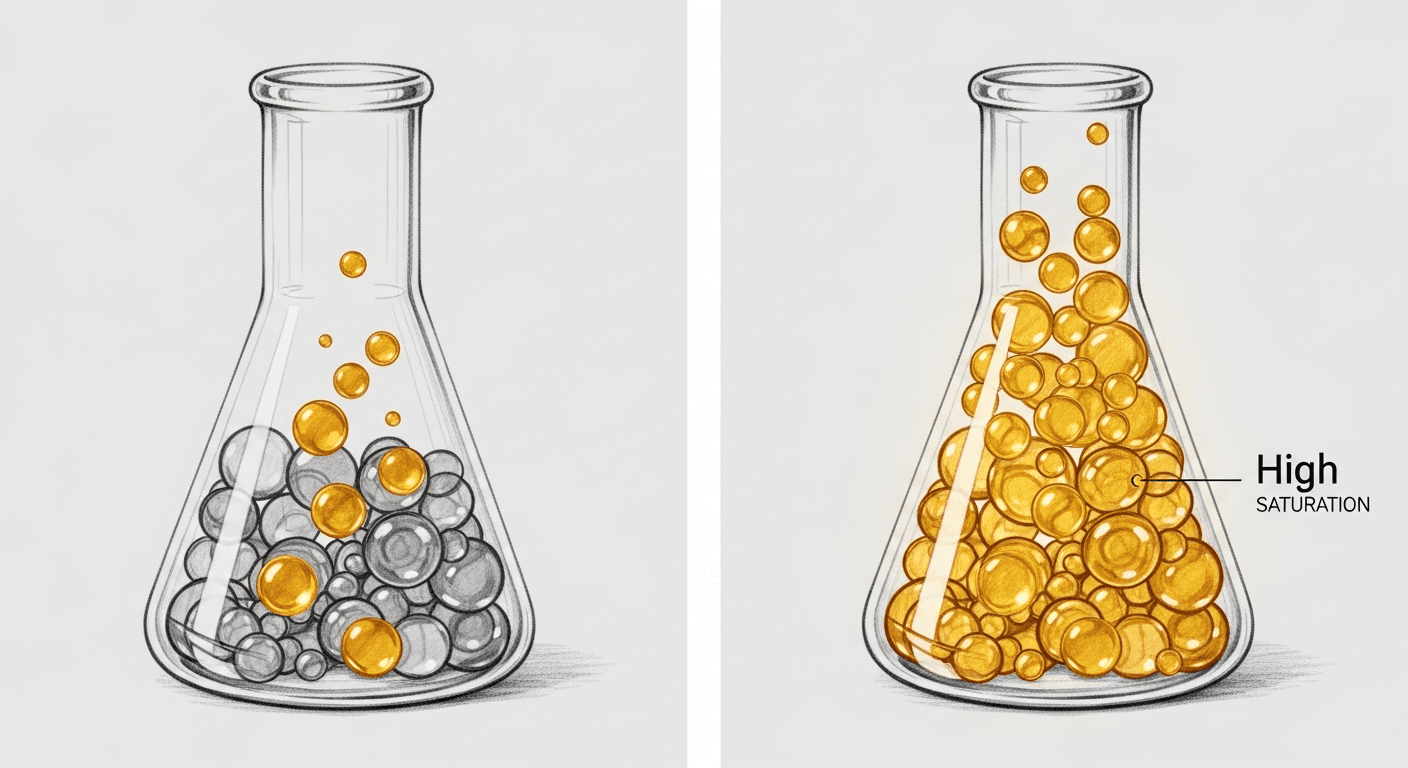The experience of wearing Montale parfumuri is an education in the concept of olfactory saturation. These are not fragrances that whisper; they are designed to make an indelible statement through sheer, unadulterated concentration. The house is renowned for using a very high percentage of perfume oils in their alcohol base, pushing the boundaries of what is technically considered an “Eau de Parfum” and venturing into the territory of “Extrait de Parfum” potency.
This commitment to saturation is a deliberate artistic choice that fundamentally changes how the fragrance performs. It creates a scent that is not just stronger, but also denser, richer, and possessed of a formidable longevity and presence. Understanding this principle of high concentration is key to appreciating the unique character of the Montale style and learning how to wear it effectively.
This approach offers a powerful lesson in how a single variable—in this case, concentration—can transform an entire composition. It is a principle that can be applied to other areas of self-education, such as understanding how the deliberate use of a single aroma can enhance memory, a phenomenon at the heart of using scent for studying. Both concepts demonstrate how a focused, potent application of a tool can yield powerful results.
The Science of Concentration
In perfumery, a fragrance’s designation—Eau de Cologne, Eau de Toilette, Eau de Parfum, or Extrait de Parfum—is determined by the concentration of aromatic compounds (perfume oil) dissolved in the solvent, which is typically ethanol. While the exact percentages can vary, an Eau de Parfum (EDP) typically contains between 15-20% perfume oil. Montale’s creations often push toward or even exceed the upper end of this range, behaving more like Extraits, which can contain 20-40% oil.
This high level of olfactory saturation has a direct impact on the perfume’s volatility. The higher the concentration of oils, the less “free” alcohol there is in the solution. This means that when the fragrance is sprayed, the alcohol evaporates more quickly, leaving behind a denser and more substantial layer of the pure aromatic compounds on the skin.
This dense layer of oil evaporates much more slowly than the fine mist of a less concentrated fragrance. This is the primary reason for the brand’s legendary longevity; the scent physically remains on the skin for a longer period because it is evaporating at a much slower rate.
The Effect on the Scent Pyramid
A fragrance’s concentration does not just affect its strength; it also profoundly alters the way the scent pyramid unfolds. The classic pyramid structure consists of volatile top notes, heart or middle notes, and heavy base notes, which are meant to evaporate in a sequence. A high concentration of oils tends to compress this pyramid, creating a more linear and cohesive scent experience.
In a highly saturated fragrance, the following effects are often observed.
- Muted Top Notes: The bright, fleeting top notes are often less “sparkly” and more integrated into the heart of the fragrance from the very beginning. They are “weighed down” by the density of the other oils and cannot flash off as quickly.
- An Amplified Heart: The middle notes, which form the core character of the scent, are present and powerful almost immediately and remain the dominant theme for a much longer period.
- A Richer Base: The heavy base notes are more prominent throughout the life of the fragrance, providing a constant, rich foundation that gives the scent its depth and tenacity.
- A Linear Journey: The overall effect is less of a multi-stage journey and more of a single, powerful, and unwavering statement that remains consistent for many hours.
This linear structure is a key part of the Montale signature style, prized by those who want their fragrance to be a clear and unchanging personal emblem.
Sillage and a Lesson in Application
The high saturation of Montale perfumes is directly responsible for their famously potent sillage—the scent trail they leave in the wearer’s wake. The dense cloud of slowly evaporating molecules creates a powerful aura that can easily fill a room. This is a key feature, not a bug, of the brand’s design philosophy, but it requires a significant adjustment in application technique.
The standard advice of spraying liberally on pulse points does not apply here. With a fragrance this concentrated, a single spray is often more than sufficient for all-day wear and a powerful projection. Over-spraying can quickly become overwhelming, both for the wearer and for those around them.
Mastering the art of wearing a high-saturation perfume is an education in itself. It teaches the importance of restraint and precision. A half-spray or a single spray applied to the back of the neck or the wrists is often the perfect dosage to achieve a beautiful, commanding sillage that remains elegant rather than intrusive.
The Consumer’s Education
For a consumer accustomed to lighter Eau de Toilettes, the first experience with a Montale fragrance can be a revelation. It educates the nose and the mind about the true potential of perfume performance. It re-calibrates one’s expectations for what longevity and projection can be.
This experience can be a turning point in a person’s fragrance journey. It often leads to a deeper appreciation for the role of concentration in a perfume’s character and can inspire a desire to explore other high-concentration Extraits. It is a lesson in olfactory quality, demonstrating the tangible difference that a higher percentage of raw materials can make.
This is why many fragrance enthusiasts consider owning at least one Montale to be an essential part of a well-rounded “perfume education.” It provides a clear and undeniable benchmark for power and performance, expanding one’s understanding of the full spectrum of what a fragrance can be.
Frequently Asked Questions
While they are technically labeled as Eau de Parfum, their performance and oil concentration are widely considered by the fragrance community to be at the level of an Extrait de Parfum. Their potency is far beyond that of a typical EDP.
Not necessarily. “Quality” in perfumery is subjective and also depends on the quality of the raw materials used and the artistry of the composition. However, a higher concentration does objectively mean that the fragrance will be stronger, last longer, and contain a higher proportion of the valuable scent oils versus the alcohol solvent.
If you’ve over-applied, you can gently dab (do not rub) the area with an unscented lotion or a cotton ball soaked in rubbing alcohol. This will help to absorb or break down some of the excess perfume oils on the skin and reduce the intensity of the sillage.

